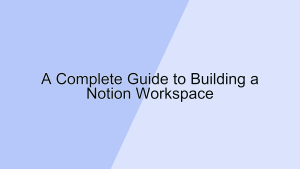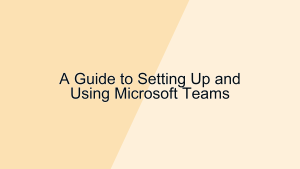Zoom has become an indispensable tool for remote work and virtual meetings. While it offers many features to facilitate communication, making the most out of Zoom requires some strategic approaches. In this article, we will explore various tips to help you conduct more productive and effective Zoom meetings.
1. Prepare in Advance
Preparation is key to ensuring a smooth and productive Zoom meeting.
- Set an Agenda: Establish a clear agenda before the meeting. This document should outline the topics to be discussed, the order in which they will be addressed, and the time allocated for each item. Sending the agenda to participants in advance allows everyone to prepare adequately and ensures that the meeting stays on track. A well-prepared agenda helps in minimizing off-topic discussions and keeps the meeting focused on its objectives. Additionally, it provides a reference point during the meeting to ensure all key points are covered.
- Test Your Technology: Before the meeting, test your Zoom setup to ensure everything is working correctly. This includes checking your internet connection, microphone, camera, and any other equipment you plan to use. Familiarize yourself with Zoom’s features, such as screen sharing and breakout rooms, to avoid technical issues during the meeting. Ensuring your technology is functioning properly helps in avoiding disruptions and maintaining a professional atmosphere. It also demonstrates respect for participants’ time by preventing unnecessary delays.
2. Create an Optimal Environment
The environment in which you conduct your Zoom meeting can significantly impact its productivity.
- Choose a Quiet Space: Select a quiet location to host your meeting to minimize background noise and distractions. Inform others in your household or office about your meeting schedule to prevent interruptions. Using a quiet space helps in maintaining focus and ensures that participants can hear and understand each other clearly. This is especially important for meetings that involve detailed discussions or presentations, where clear communication is crucial.
- Adjust Your Lighting and Background: Ensure that your face is well-lit and clearly visible on camera. Natural light is ideal, but if that’s not available, use a desk lamp or ring light. Your background should be clean and professional; avoid clutter or distracting elements. Some people use virtual backgrounds provided by Zoom, but ensure they are appropriate and not distracting. A well-lit and tidy background creates a professional impression and helps in keeping participants engaged.
3. Use Zoom Features Effectively
Zoom offers a range of features that can enhance the productivity of your meetings if used correctly.
- Screen Sharing: Screen sharing allows you to present documents, slides, or other materials to participants in real-time. This feature is particularly useful for collaborative work, training sessions, and presentations. When sharing your screen, ensure that only relevant windows are open to avoid displaying unnecessary information. Screen sharing helps in visualizing complex information and facilitates better understanding among participants. Preparing your materials in advance and organizing them for easy access during the meeting can enhance the effectiveness of screen sharing.
- Breakout Rooms: Zoom‘s breakout rooms feature allows you to split a large meeting into smaller groups for more focused discussions. This is particularly useful for workshops, brainstorming sessions, and group activities. You can create breakout rooms manually or let Zoom assign participants randomly. Breakout rooms help in fostering more intimate and interactive discussions, enabling participants to engage more deeply with the topic. Providing clear instructions and objectives for each breakout session ensures that the time spent in smaller groups is productive and aligned with the overall meeting goals.
4. Facilitate Engagement and Participation
Ensuring that all participants are engaged and actively participating can make your Zoom meetings more productive.
- Encourage Participation: Actively encourage all participants to contribute to the discussion. This can be achieved by asking direct questions, inviting opinions, and facilitating a round-robin format where each person has a chance to speak. Encouraging participation helps in generating diverse ideas and perspectives, leading to more comprehensive discussions. It also ensures that all voices are heard, which can improve team cohesion and morale. Using Zoom’s reaction features, such as raising hands or emojis, can also facilitate smoother interactions and feedback.
- Use Polls and Q&A: Zoom offers polling and Q&A features that can enhance interactivity. Polls can be used to gather instant feedback or make quick decisions during the meeting. The Q&A feature is particularly useful for larger meetings or webinars, allowing participants to submit questions without interrupting the flow of the meeting. Using these features helps in keeping participants engaged and provides a structured way to address questions and concerns. It also allows for more democratic participation, as everyone has an equal opportunity to voice their opinions or ask questions.
5. Manage Time Effectively
Effective time management is crucial for productive Zoom meetings.
- Stick to the Schedule: Adhere to the meeting agenda and allocated times for each topic. This discipline helps in ensuring that all important issues are covered without the meeting running over time. Appointing a timekeeper can be helpful in keeping track of the schedule and gently reminding participants if discussions are exceeding their allotted time. Sticking to the schedule demonstrates respect for participants’ time and helps in maintaining their focus and engagement throughout the meeting. It also sets a professional tone and ensures that the meeting objectives are met efficiently.
- Plan for Breaks: For longer meetings, it’s important to schedule short breaks to prevent fatigue and maintain productivity. Breaks provide participants with the opportunity to stretch, grab a drink, or simply rest their eyes. Planning for breaks helps in keeping participants refreshed and attentive, thereby enhancing the overall effectiveness of the meeting. Communicating the break schedule in advance allows participants to manage their time better and return promptly, minimizing disruptions.
6. Follow Up After the Meeting
Following up after a Zoom meeting is essential for ensuring that action items are addressed and objectives are met.
- Send Meeting Minutes: Distribute meeting minutes or a summary of key points and action items to all participants shortly after the meeting. This document should include decisions made, tasks assigned, and deadlines. Sending meeting minutes helps in reinforcing the discussed points and ensures that everyone is on the same page. It also serves as a reference for future meetings and helps in tracking progress on action items. Clear and concise minutes facilitate accountability and follow-through on the agreed-upon tasks.
- Schedule Follow-Up Meetings: If necessary, schedule follow-up meetings to review progress on action items and address any outstanding issues. Follow-up meetings help in maintaining momentum and ensuring that tasks are completed on time. They also provide an opportunity to address any challenges or changes that may have arisen since the initial meeting. By scheduling follow-up meetings, you demonstrate a commitment to achieving the meeting objectives and maintaining ongoing communication and collaboration.
7. Leverage Advanced Features for Enhanced Productivity
For more experienced users, Zoom offers advanced features that can further enhance meeting productivity.
- Recording Meetings: Recording meetings can be beneficial for participants who were unable to attend or for reviewing important discussions later. Zoom allows you to record meetings and save them to the cloud or your local device. Before recording, always inform participants and obtain their consent. Recording meetings helps in capturing detailed information and allows for thorough review and analysis. It also provides a valuable resource for training and onboarding new team members. Properly organizing and storing recorded meetings ensures that they are easily accessible when needed.
- Using Integrations: Zoom integrates with various productivity tools, such as Slack, Microsoft Teams, and Google Workspace. These integrations can streamline workflows and enhance collaboration. For example, you can schedule Zoom meetings directly from your calendar app or share meeting recordings in your team communication platform. Using integrations helps in consolidating communication and reducing the need for switching between different tools. It also enhances efficiency by automating routine tasks and providing seamless access to meeting-related information.
Conclusion
By preparing in advance, creating an optimal environment, using Zoom features effectively, facilitating engagement, managing time, following up, and leveraging advanced features, you can make your Zoom meetings more productive and efficient. Implement these tips to enhance collaboration, improve communication, and achieve your meeting objectives.












